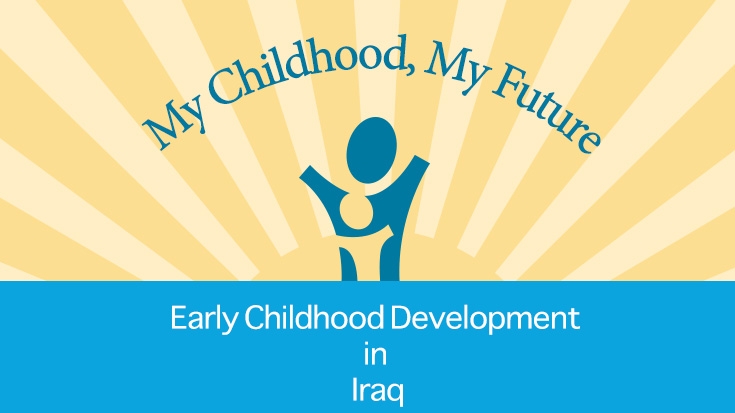The status of Early Childhood Development (ECD) in Iraq
- Almost a quarter of children are excluded from prenatal care, and only half receive regular prenatal care.
- Less than two-thirds of children are fully immunized, putting children at greater risk of illness.
- Almost a quarter of children in Iraq suffer from stunted growth and at great risk for a lifetime of diminished human capital.
- Only 3% of children age 3–4 attend any form of Early Childhood Care and Education (ECCE) and only half have any experience of childhood development activities.
- Rates of violent discipline are high, with 3 out of 4 children age 2–5 experiencing it.
- One in ten children is engaged in child labor at age 5.
Figure 1. Early childhood development indicators for Iraq (%)
Source: Authors’ calculations based on Iraq MICS 2011
Children in Iraq have very different opportunities for healthy development based on factors beyond their control.
There are substantial differences in the opportunities children have in terms of healthy development and accumulating human capital. Early childhood is when cycles of poverty and inequality are transmitted across generations. Children tend to be consistently advantaged or disadvantaged across a variety of different dimensions of ECD, and can have very different life chances based on just a few family background characteristics. If we observe a child who lives in a rural, south/central area of Iraq, in the poorest 20% of households, with uneducated parents (a “least advantaged” child) and compare that child to one who has parents with higher education, is from the richest 20% of households, and lives in urban Kurdistan (a “most advantaged” child), we find they have different chances of healthy early childhood development. Figure 2 presents the chances (predicted chance) of different ECD indicators for these “least advantaged” and “most advantaged” individuals.
The least advantaged child faces a systematically poorer chance of healthy early development. Comparing the least and most advantaged, the gap in prenatal care is 52 percentage points, and the gap in skilled delivery care is 28 percentage points. The least advantaged child is 57 percentage points less likely to be immunized than the most advantaged child. In terms of nutrition, the least advantaged child has a 30% chance of being stunted by poor nutrition compared to a 12% chance for the most advantaged child. The gap in terms of being underweight is 7 percentage points and the gap in being wasted is 4 percentage points. There is a 58 percentage point gap in a child’s chances of being fed any iodized salt, and a 66 percentage point gap in their chances of engaging in at least four childhood development activities. The largest relative difference is in ECCE attendance, where the most advantaged child has less than 1% chance of ECCE, and the most advantaged has 22%. The least advantaged child is 18 percentage points more likely to be violently disciplined, and 4 percentage points more likely to be engaged in child labor.
Figure 2. Inequality in the chances for healthy early childhood development (%)
Source: Authors’ simulations of chances for a “most advantaged” and a “least advantaged” child based on calculations using Iraq MICS 2011


